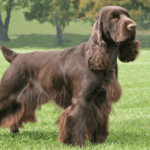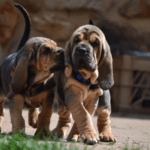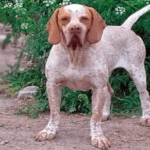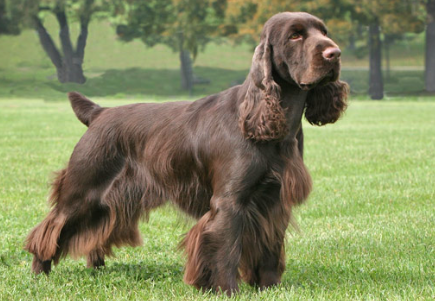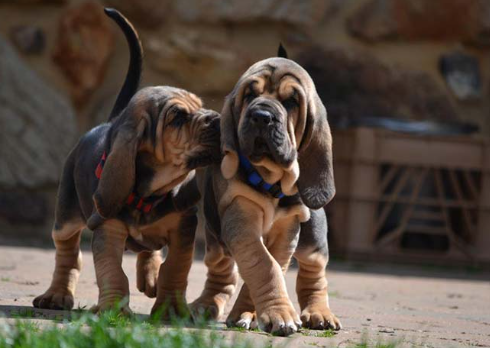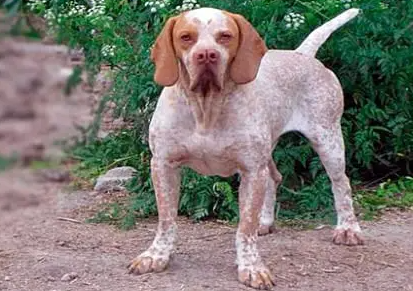The Havana Brown breed originated from a deliberate breeding effort conducted by a community of cat enthusiasts in England during the 1950s. Through carefully organized mating between Siamese and domestic black cats, they sought to establish this unique feline variety.
In the early stages of development, breeders incorporated the Siamese-like Russian Blue into their breeding practices. Nevertheless, contemporary genetic testing suggests that virtually none of these genes persist in the current Havana Brown gene pool.
Historical records indicate the presence of self-browning cats in Europe during the 1890s, referred to as the Swiss Mountain Cat. However, these felines disappeared post-World War II, potentially due to discouragement from the Siamese Cat Club of Britain regarding their breeding.
Despite the existence of the Swiss Mountain Cat, it played no role in the modern breeding initiatives for the Havana Brown. Nonetheless, both breeds likely share genetic traits inherited from the Siamese lineage.
- ORIGIN: England
- WEIGHT: About 6 to 10 pounds
- LENGTH: About 18 inches
- HEIGHT: 12″-14″
- COAT COLOR: Rich and even shade of warm brown; color tends toward red-brown (mahogany) rather than black-brown
Characteristics
Though each cat possesses its unique personality, Havana Brown cats generally exhibit friendliness, sociability, and a keen interest in their home environment.
They actively seek interaction with their human companions, readily occupying their owner’s lap, engaging in lively games such as ribbon catch, and enjoying the comfort of being brushed or stroked.
In the absence of their preferred human company, Havana Browns often display a willingness to play with other household pets, both feline and canine, showcasing their amicable nature. They also tend to get along well with children.
Adult Havana Browns are of medium size, featuring a gracefully muscular physique. When not exploring, socializing, or playing, they frequently indulge in one of their preferred pastimes: a leisurely and extended nap, often on their owner’s pillow or a cozy chair.
| Adaptability: 5Point | Energy Level: 3Point |
| Child Friendly: 4Point | Social Needs: 5Point |
| Shedding Level: 3Point | Grooming: 1Point |
| Health Issues: 1Point | Stranger Friendly: 3Point |
| Affectionate: 5Point | Dog Friendly: 5Point |
| Intelligence: 5Point |

History
While the Tamara Maw Cat-Book poems from an ancient manuscript dating back to 1350 C.E. mention solid brown cats, the Havana Brown cat, as we recognize it today, emerged as a relatively recent breed with the establishment of the Siamese.
In their early historical existence, these ancient brown cats served not only as adorable companions but were also believed to possess protective qualities against evil forces. A few self-browning cats were transported from Siam to England in the late 19th century, described as “Siamese, with burnt chestnut coats and green-blue eyes,” reflecting their prized status.
The ancestral origins of these early imports varied, possibly including Burmese, Tonkinese, and Chocolate Point Siamese, with potential matings between Siamese and domestic black or blue cats. This diverse heritage likely contributed to cats resembling the contemporary Havana Browns we know today.
Historical records indicate that solid brown cats were showcased in Europe during the late 19th and early 20th centuries, marking a notable chapter in the breed’s development.
English show In 1888
In 1888, a brown cat claimed the top prize at an English show, underscoring the admiration that cat enthusiasts from that era held for these captivating chocolate-colored felines—a sentiment still resonant in contemporary times.
By the 1930s, the British Siamese Cat Club excluded solid brown cats without blue eyes from competition, expressing a preference for blue-eyed Siamese breeds. However, this was not the conclusion of the story; a revival of interest in solid brown Siamese cats emerged in the early 1950s. English cat breeders, delving into the intricacies of chocolate gene inheritance, initiated a new breeding program.
Their efforts involved successful pairings of Siamese cats with domestic shorthairs and a select group of Russian blues, resulting in the birth of solid chocolate point-colored kittens. It’s noteworthy that these breeds displayed a darker hue compared to the light sable color of Burmese kittens.
In 1952, the foundational genetics for today’s Havana Brown cats were established with the creation of a solid chocolate kitten named Elmtower Bronze Idol. This kitten, affectionately nicknamed the Bronze Idol, was the product of mating a Seal Point Siamese with a solid black cat, both carriers of the chocolate gene.
The breed gained official recognition from the Governing Council of the Cat Fancy in 1958, albeit under the name “Chestnut Brown Foreign.”
1959 In the breed name was changed
In 1959, the breed underwent a name change, and whether the Havana Brown cat drew its name from the Havana cigar or the Havana rabbit remains uncertain. Both cigars and rabbits share the same rich color as the Havana Brown cat. The Cat Fanciers Association (CFA) granted the breed championship status in 1964.
By 1974, the gene pool of the Havana Brown cat was closed to outcrossing. However, in the early 1990s, the breed became rarer, prompting breeders to resort to mating closely related cats.
The Wynne Feline Foundation and Dr. Leslie Lyons, Ph.D, from the Veterinary Genetics Laboratory at the University of California, Davis, intervened to assist Havana Brown breeders in establishing a successful outcross program. In 1998, the CFA decided to permit outcrossing with Seal Point and Chocolate Point Siamese cats, select Oriental Shorthair cats, as well as Solid Blue and Solid Black Domestic Shorthair cats.
Registries
Offspring resulting from pairings between registered Havana Brown cats have the option to be mated with one of the approved outcrosses and then another Havana Brown. As long as the kittens meet the breed standards, they can be officially registered and identified as Havana Browns.
The Havana cat is acknowledged by all major cat registries. The International Cat Association (TICA) acknowledges the “lilac” (thin) color and designates the breed as “Havana.” Meanwhile, other registries, including the American Cat Fanciers Association (ACFA) and the Cat Fanciers Association (CFA), refer to the breed as “Havana Brown.”
Appearance
The Havana Brown cat boasts an appealing appearance, distinguished by its sleek and lustrous coat, which exhibits a warm brown hue extending from the tip of its ears to the tail. The mustache and nose also share this rich brown coloring. Although Havana brown kittens and young adults may display faint tabby stripes, often referred to as “ghost” markings, these tend to fade away as the cat matures into adulthood. While the coat is typically short, some individual cats may have slightly longer fur.
A distinctive feature of the breed is its bright green eyes, a hallmark outlined in breed standards. While any vivid shade of green is acceptable, deeper tones are preferred. Some Havana Browns showcase striking emerald-green eyes that contrast beautifully with their brown coats. The head’s overall shape is somewhat triangular, paying homage to the breed’s Siamese lineage.
Male Havana Browns are generally slightly larger than females, both possessing a somewhat muscular build with long legs and slender tails that harmonize proportionally with their body size. Although this breed sheds less than some others, it is important to note that Havana Browns are not hypoallergenic.
Temperament
If you have limited time for cat interaction, reconsider choosing a Havana Brown. This breed is known for its human-oriented, playful, and whimsical nature. It possesses a strong desire to engage with its human companions and actively participate in their activities. If you find cats pawing at your feet bothersome, the Havana Brown may not be the ideal choice.
Havana Browns often use their claws to probe and attract attention from their owners. They particularly enjoy interactive toys that ensure they have your undivided focus.
Havana brown cat Personality
The Havana Brown’s personality outshines its distinctive appearance, surpassing even its cannon, ears, or mink-like coat. Though still uncommon, Havanas have garnered a dedicated following. These cats are affectionate, gentle, highly intelligent, and, in contrast to their Siamese counterparts, notably serene.
Demonstrating remarkable adaptability, Havana Browns easily acclimates to various situations with composure and confidence. Their happiness and well-being hinge on regular human interaction.
These felines actively seek the attention of their human companions, always desiring to be by your side, assisting with household tasks. Havana Browns are known to extend their affection by reaching out and touching their favorite humans, often nudging them with outstretched paws as if yearning for attention. The game of fetch holds a special place in their hearts, and it’s not uncommon to see them carrying toys or small objects in their mouths.
For those who’ve misplaced a sock or a petite item, a check in Havana’s resting place may reveal the magically retrieved possession.
Health
All cats carry the potential for genetic health issues, much like humans are susceptible to hereditary diseases. Any breeder asserting that their breed is entirely free from health or genetic concerns is either misinformed or dishonest. It is advisable to exercise caution and avoid breeders who don’t provide health guarantees for kittens, claim their breed is entirely problem-free, or assert that their kittens differ significantly from the norm for health reasons.
While Havana Browns generally enjoy good health, they may be prone to the development of calcium oxalate stones in the urinary tract. It is prudent to choose a breeder who offers a documented health guarantee.
Once you welcome a new kitten into your home, you play a crucial role in safeguarding their well-being, particularly against common health issues like obesity. Maintaining a healthy weight for your Havana Brown is a straightforward and effective means of preserving their overall health.

Care
The Havana Brown’s short, sleek coat demands minimal grooming. A gentle once-a-week brushing with a soft slicker or rubber curry brush effectively removes any ingrown hairs. For an added brilliant shine, polish the coat with a chamois cloth post-brushing. Regularly trim your Havana Brown’s nails and conduct a weekly check inside the ears.
If any dirt is observed in the ears, use a pet ear cleanser with a cotton ball (avoid inserting items like cotton swabs into a cat’s ear). Should the ears appear red, swollen, excessively dirty, or if you notice your Havana Brown shaking its head or scratching its ears frequently, consult with your veterinarian promptly.
Given their innate activity and curiosity, Havana Browns readily engage in daily exercise through indoor enrichment and play. Introduce toys multiple times a day to involve your cat in play, considering that many Havana Browns enjoy interactive play with small dog-like toys. Enhance their environment with climbing opportunities, such as cat trees, shelves, or kitty condos.
As scratching is a natural and enjoyable activity for cats, it serves as an exercise for their leg and paw muscles while maintaining their nails. Provide multiple acceptable scratching locations, including both vertical and horizontal scratchers, to meet your Havana Brown’s needs.
Best Food For
- Hill’s Science Diet Adult Savory Turkey Entrée Cat Food
- Hill’s Prescription Diet y/d Chicken Flavor Dry Cat Food
- Hill’s Science Diet Adult Chicken Recipe Cat Food
- Hill’s Science Diet Adult Savory Chicken Entrée Cat Food
Feeding
Every cat requires continual access to clean, fresh water to stay hydrated, particularly for the energetic play on their agenda. Local pet stores offer a variety of high-quality cat foods that cater to your Havanese’s nutritional requirements.
The appropriate amount of food to feed your cat is determined by factors such as size, exercise level, and age. Refer to the food packaging for daily feeding guidelines, and split the recommended quantity into two meals spaced approximately 8 to 12 hours apart.
While free feeding can be suitable for some cats, constant access to food may lead to overeating. If opting for free feeding, choose dry food, as wet food left out for extended periods can attract bacteria and mites.
Consider your cat’s preferences and needs when deciding between wet and dry food. Wet food offers ample moisture and a diverse range of flavors and textures, making it suitable for cats who may be picky eaters or have hydration challenges. Conversely, dry food is cost-effective and has a longer shelf life compared to wet food.
As your cat ages, their nutritional requirements will evolve. Collaborate with your veterinarian to determine the most appropriate diet for your Havanese throughout their life.
Grooming
The Havana Brown boasts a manageable silky coat that doesn’t require excessive effort. A straightforward grooming routine involves weekly brushing.
Beyond brushing, regular grooming for the Havana Brown includes routine nail clipping and, if necessary, ear cleaning using a mild cleanser recommended by your veterinarian. Maintain good overall health and fresh breath by frequently brushing your cat’s teeth with vet-approved pet toothpaste.
It’s beneficial to initiate brushing, nail clipping, and grooming activities while your cat is still a kitten, as this helps them acclimate to these practices later on.
Training
While you’re probably not going to train your cat to complete a wide range of tricks, it’s not too difficult to train them to do what they want, such as scratching at the scratch post and using the litter box.
Havana Brown cats are highly intelligent cats, and if they decide they want to do something, they have no problem doing it. The problem is that like most cats, they are fiercely independent and stubborn.
So, while litterbox training is easy, training them to do tricks is one of the most difficult tasks out there.
Exercise
The Havana Brown boasts a manageable silky coat that doesn’t require excessive effort. A straightforward grooming routine involves weekly brushing.
Beyond brushing, regular grooming for the Havana Brown includes routine nail clipping and, if necessary, ear cleaning using a mild cleanser recommended by your veterinarian. Maintain good overall health and fresh breath by frequently brushing your cat’s teeth with vet-approved pet toothpaste.
It’s beneficial to initiate brushing, nail clipping, and grooming activities while your cat is still a kitten, as this helps them acclimate to these practices later on.
Adoption center
The Havana Brown stands out as an exceptionally rare cat breed, making it challenging to locate a Havana Brown kitten. A recommended approach is to attend local cat shows, where you can interact with reputable breeders. Cat shows provide an enjoyable experience, allowing you to witness various cat breeds in one place.
To discover cat shows in your vicinity, conduct an Internet search for “cat show near me” or refer to the Cat Fanciers Association website, which compiles information on registered cat shows worldwide.
Given the rarity and value of Havana Browns, it’s improbable to encounter one at a cat rescue or shelter.
Havana brown Cat Video
See More Cat Breeds For Further Research
FAQs
What is the cost of a Havana cat?
Acquiring a rare Havana Brown kitten is neither economical nor easily attainable. A three-month-old purebred Havana Brown may range from $800 to $1,500 or more, contingent upon factors such as quality, age, markings, breeder reputation, and geographical location.
Are Havana Brown cats uncommon?
The Havana Brown stands out as an exceptionally rare breed. If a catalog of endangered cat breeds were to exist, the Havana Brown would likely secure a prominent position at the forefront.
Are Havana Brown cats amiable?
Havana Brown cats exhibit a friendly, affectionate, and playful nature, characterized by their medium size. Seldom aloof or independent, these cats prefer close proximity to their human companions. Some employ their claws akin to hands, reaching out to seek attention, and they thrive on ample interaction.
How scarce are Havana cats?
The Havana Brown is exceptionally rare, with estimates suggesting that fewer than 1,000 cats of this breed exist worldwide. Recognizable by their large, round-tipped ears tilted forward, Havana Browns exude an alert and distinctive appearance.


